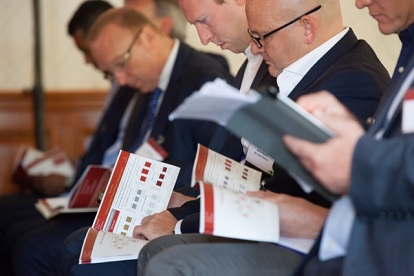What do we think the end-to-end experience is going to look like?
HISTORY AND DIRECTION OF TRAVEL FOR THE PLATFORM MARKET
Advisers were almost the sole contact point for clients. Products were bought via advisers, who picked from a wide variety of asset managers/life products etc.
We’ve had the rise of platforms over the last couple of decades. They first facilitated open architecture. A typical platform due diligence question pre-RDR was ‘how many funds are available on the platform?’
We’re at a new stage. We’re now seeing a rise in narrower centralised investment propositions. The need for a huge variety of products is giving way to a need for the right products.
At the same time, advisers are increasingly using third-party software to help them with risk profiling and cashflow modelling. There are also third-party discretionary managers. Integration of all these different systems.
The next generation of platforms will not look much like the services we call platforms today. Platforms today were developed as fund marketplaces. We now have a full ecosystem surrounding clients, advisers and asset managers. Platforms are currently one component. Some platforms will be defined in future as investment engines, plugging into advisers’ other systems. Other platforms will act as a hub for other systems, and some will absorb other functionality to potentially be a one-stop shop.
NEXT GENERATION INVESTMENT PLATFORMS
The user experience
Research tends to find that advisers are concerned with improving efficiency at the moment, with further pressure from regulation etc. Customer acquisition is therefore low on the agenda.
- How much of ‘improving the journey’ is for the customer and how much for improving advisers’ own efficiency?
- Where does the biggest disconnect lie for customers? What can be done to streamline the process?
- What are clients (and advisers) spending too much time on?
CURRENT TECHNOLOGY
Integration is commonly cited as a huge problem for advisers. The UK advice market is dominated by SME firms, so most software is implemented off-the-shelf with little customisation. We have seen a huge increase in use of third-party services: risk profiling, cashflow modelling, outsourced discretionary management etc.
- Which provider is most likely to ‘step up’ to be the main hub for advisers/clients? Platform, back office, any other provider?
- Which is the main channel for client communications? Face-to-face, email, phone. Is there a client portal? Who provides that portal?
- How would systems be better integrated?
FUTURE TECHNOLOGY
With open banking and pension dashboards on the horizon, we should have even greater access to data. We also have the prospect of AI and process automation.
- Is the additional data going to be useful? Or will it just add noise?
- How open are you to exploring some of these new areas?
- Robo advice has been generally poo pooed by advisers... and yet the use of third-party model portfolios is rising rapidly, which looks remarkably similar. What’s the most efficient and ‘customer-friendly’ way of running a portfolio?
FUTURE PROPOSITIONS
The lines between platform, asset manager, back office and other third-party technology are constantly shifting. Advisers’ investment propositions are increasingly tied up with platforms and providers.
- Will platforms just be transaction and custody engines, or a central pillar to advisers’ propositions?
- Where will the platform end and the back office begin?
- Will advisers be building their own technology systems, bringing together platform and back office?
CONCLUSIONS
We are in a fast-changing market, but it is one where advisers are dominant who have, through their client relationship, the means to influence the design and delivery of platforms. It is key that they meet the future needs of clients first and foremost, but it is important that in doing so, they also enable information and data to be stored and accessed effectively and seamlessly.
Expert: Richard Bradley – Platforum
Facilitator: Roderic Rennison – Rennison Consulting Ltd


